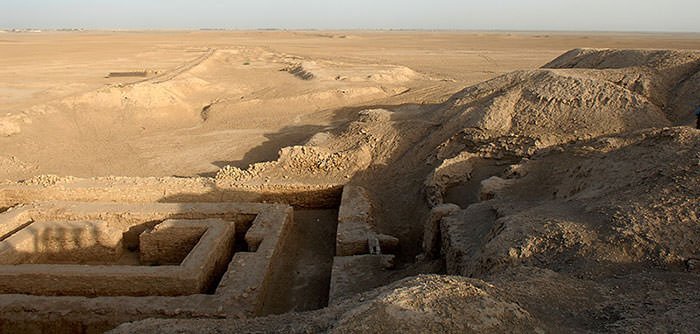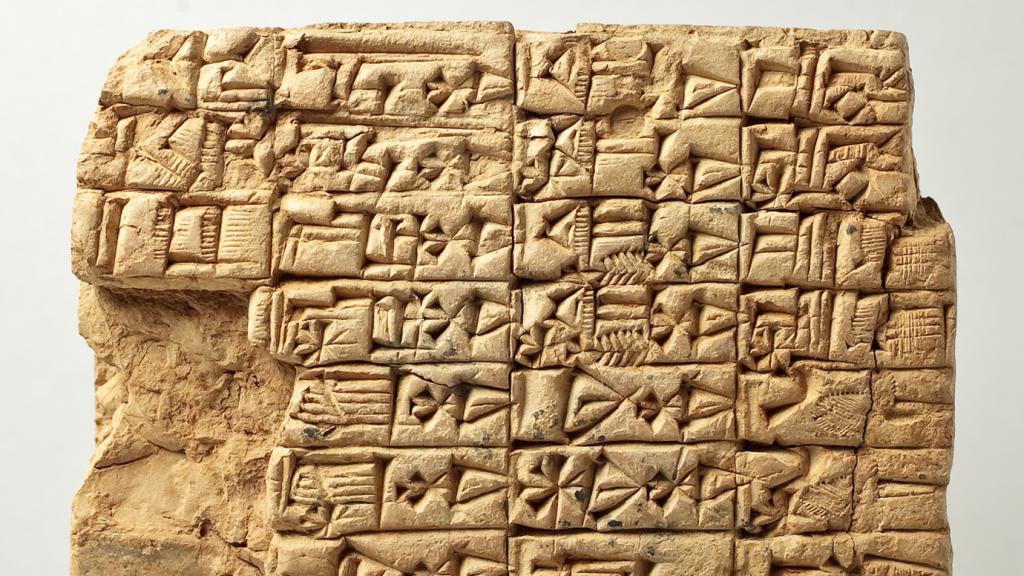
Background history of the Sumerians Civilization:
- The Sumerians were one of the earliest civilizations, along with Ancient Egypt and Indus Valley.
- The Sumerians are arguable to have one of the largest cities in the world; At its peak, their city used to contain about 40,000 to 80,000 people living inside of multiple defensive walls.
- One of the most crucial cultural achievements of the Sumerians was the linguistic record. They had the oldest as well as the earliest form of writing that appeared as far back as 4000 BCE. It is called Cuneiform, the main purpose of this writing was to make records of trades, rationale, and ownership.

Photo courtesy of the Oriental Institute of the University of Chicago
Sumerian Art and Statues – The mystery behind the blue eyes:
- It is effortless to recognize the Ancient Sumerian statues because of the big eyes. The statues were created differently, nothing was alike.
- Art at the beginning of times were often related to the spiritual world, especially from the Sumerians civilization. They used to have a complex pantheon of gods and goddesses, and their gods were represented in human form as any other gods from the ancient civilizations.
- Some of the statues that represented gods and goddesses usually had enormous blue eyes. This representation of gods was not only existed in the Sumerians culture but also many other civilizations.
- There is no certainty of the meaning behind the big blue-eyes statues due to the limitation of recorded texts from that period. However, despite the limitation, blue eyes were seen as a symbol of gods because the majority of them are looking up upon the blue sky, which can be depicted as heaven.

Opinion of my own about week 3 lecture:
The week 3 lecture is the first lecture and it is indeed an interesting one. I have got to say that I was impressed by how early they used to recognize the importance of images and words. After going over this lecture by myself again, I have had a much clearer understanding of the development and power of symbols and images in our lives. History had proven for thousands of years that an image could hold much more meaning than 1000 words, and we as future communication designers must acknowledge that it is our heritage to preserve and continue to build upon it.
“Communication is the key to us to thrive upon other species, without it, we would never be able to be seen as human.” – Nguyen Quoc Huy Anh
Sources:
- Lloyd, Ellen. “Mysterious Sumerian Statues With Big Blue Eyes – A Sign From The Gods.” Ancient Pages, 11 June 2020, www.ancientpages.com/2017/02/23/mysterious-sumerian-statues-big-blue-eyes-sign-gods/?utm_source=newsletter.
- Lerner, Louise. “Miguel Civil, World’s Leading Scholar of Ancient Sumerian, 1926-2019.” University of Chicago News, 1 Feb. 2019, news.uchicago.edu/story/miguel-civil-worlds-leading-scholar-ancient-sumerian-1926-2019.
- History.com Editors. “Sumer.” History.com, A&E Television Networks, 7 Dec. 2017, www.history.com/topics/ancient-middle-east/sumer.
